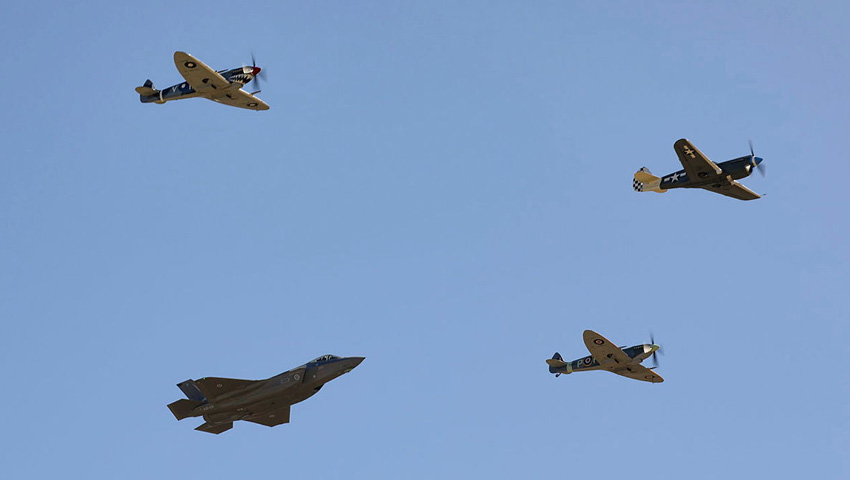The RAAF has paraded past and present aircraft, including the F-35A Lightning II, the Curtiss P-40 Kittyhawk, Spitfire and Hudson, in a centenary celebration at an air show in Temora.
To continue reading the rest of this article, please log in.
Create free account to get unlimited news articles and more!
The unique showcase of old and new included displays from more than 50 aircraft, which were also marking the 20-year anniversary of the museum itself.
Those on display included: BT-13, CAC Winjeel, Cessna O-1 Bird Dog, Consolidated PBY Catalina, DHC Caribou, Grumman Avenger, Hawk 127, Lockheed C-130, P-40 Kittyhawk, P-51 Mustang, PAC CT/4, PC-21 Roulette and T-6 Texan.
Despite COVID restrictions, the attraction was still able to offer 3,000 tickets across both Saturday and Sunday, 6–7 March.
In February, Australian Aviation first reported how RAAF would reform the legendary No. 100 Squadron to fly aircraft from the current heritage fleet in Temora and Point Cook.
In its past incarnation, the unit most notably carried out the RAAF’s first Beaufort operation resulting in the crucial sinking of a Japanese merchant vessel.
Minister for Defence Personnel Darren Chester said then, “First established during the Second World War in February 1942 at RAAF Base Richmond, 100 Squadron was an Air Force bomber and maritime patrol squadron, trained on Australian-built Bristol Beauforts
“The squadron conducted several successful missions throughout the war, taking part in the famous Battle of the Bismarck Sea in March 1943, and eventually disbanding in New Guinea on 19 August 1946.”
No. 100 Squadron was formed from surviving personnel from the British RAF’s No. 100 Torpedo Bomber Squadron who had escaped from Malaya.
The first RAAF Squadron to be equipped with Australian-built Beauforts, No. 100 Squadron was deployed to Queensland in May 1942, where it conducted further torpedo bomber training and anti-submarine patrols.
Notable deployments also included flying reconnaissance and bombing missions against coastal shipping in Milne Bay, PNG, and conducting the first land-based torpedo strike in 1942 sinking a Japanese cruiser.
“No. 100 Squadron also took part in the famous Battle of the Bismarck Sea in March 1943, when eight torpedo-armed Beauforts met with limited success against a dispersed Japanese convoy,” reads its official website.
“This mission proved to be the squadron’s last torpedo-bombing mission and thereafter it operated solely in the level-bombing mode – striking targets by night, in particular, the Japanese fortress at Rabaul.”
Later in the month, it was then confirmed that the former Executive Officer of Headquarters Air Academy had been appointed as the new commanding officer of 100 Squadron.
Wing Commander Philip Beanland said he felt “extremely privileged” to take the role for the unit that will have the motto “then, now, always” and its own unique badge.

 Login
Login







